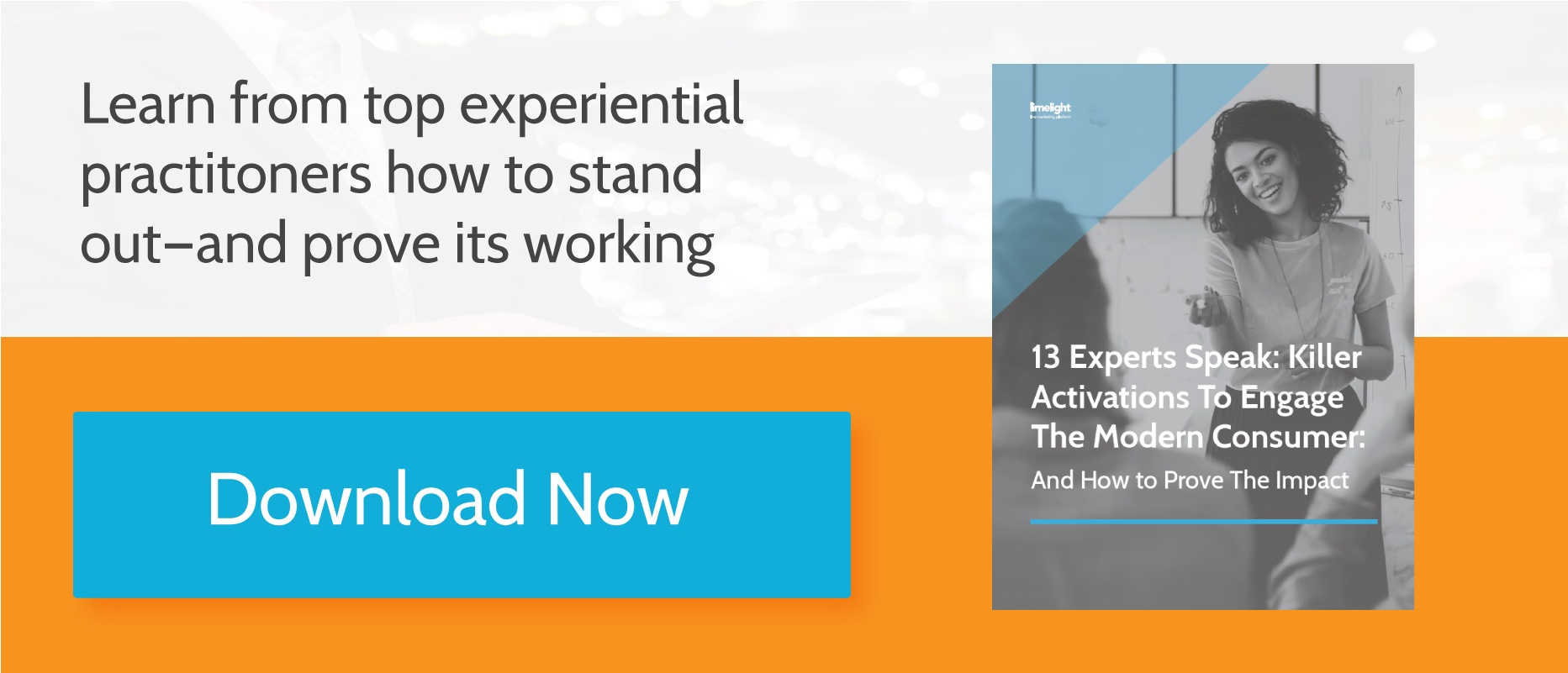Beyond Lips to Liquor: What Happens After Your Activation?
.png?width=50&name=download%20(1).png) By
Julia Manoukian
·
3 minute read
By
Julia Manoukian
·
3 minute read
Alcohol and beverage brands are adding some fizz to their marketing mix with experiential -- the most effective way to build connections with consumers. Branded activation strategies help companies get to know consumers more and create unforgettable live events that drive engagement. Here's how you can use the power of experiential to understand your customers a little better.
Pop-Up Bars
You've heard about pop-up stores, but what about pop-up bars? This recent phenomenon has revolutionized the drinks sector, with more beverage brands temporarily setting up shop in city-centers and shopping malls.
The objective? To increase brand awareness and forge emotional connections between consumers and companies.
Pop-up bars provide you with many benefits. First, you don't have to commit to a long lease or freehold in a desirable location. Second, this activation strategy lets your company collect data from customers and understand their purchasing and drinking habits. This way, you can follow-up with customers who visited your pop-up bar and add them into your database, allowing you to extend communication beyond the event.
There are numerous examples of successful pop-up bar concepts. These include Scottish beverage brand Crabbie's, who set up pop-up bars in eight locations across the U.K. The premise was simple: a 5-by-5-meter wooden shipping crate opened out as a bar during the day and turned into an exhibition display at night. Crabbie's took their pop-up bar to shopping malls, where customers could sample their fruit beers.
"Pop-up bars combine two wonderful concepts -- experiential retail spaces and alcoholic experimentation," says Charlotte Joyce Kidd, writing for Trend Hunter. "The pop-up concepts in this collection serve a wide range of purposes. In some cases, they're a chance for a brand to bring a new product or marketing campaign to its consumers in a truly memorable way."
If you want to set up a pop-up bar, you can provide product samples or other freebies in exchange for customer data. Ask consumers to fill out a few personal details on a survey and use software to analyze this information. The latest technology will let you build customer profiles and personalize future communications.
Brand Partnerships
When two brands team up, they can draw on their respective resources and target valuable customers. More alcohol and beverage brands are stepping outside the drinks space and partnering with companies in other industries for deeper market penetration, and this is something you can try yourself. Drinks companies who target young adults, for example, often work with music festival organizers and let visitors sample their drinks.
Other examples of brand partnerships include one-of-a-kind experiences at large events. Vodka brand Grey Goose hosted a star-studded party at the 2014 Toronto International Film Festival, for example. Try teaming up with another company and reap the benefits! It's a great way to enter new markets and introduce your products to people who have never heard of them before.
"By bringing two or more companies together to create value, we not only enhance the customer buying process, but we also enhance the benefits of the partnering brands as well," writes Gregory Pollack for MarketingProfs.
"For a true strategic partnership brand marketing program to work, both brands must complement each other and deliver similar customer profiles. Even more importantly, the partnership must sit within the lifestyle and user experience of the customer."
You can optimize your marketing campaigns by sharing data and receiving customer intelligence from partners. Only software will provide you with the in-depth insights you need for statistical analysis.
Drink Making Experiences
Some of the best activation strategies incorporate educational experiences that deliver real value to a consumer. These include cocktail classes or drink making experiences, where customers learn how to mix customized colorful concoctions alongside industry professionals.
Why not set up a masterclass of your own? This is a brilliant way to get to know your customers a little better, and you can use the information gathered at the event for future marketing campaigns and statistical analysis. Just don't forget to include recipes that feature your company's (or client's) product.
"Combining experiential marketing efforts with an educative experience opens the pathway for greater consumer reliability, from the convention hall or trade show floor to the classroom," explains Business 2 Community. You can use software to track the success of your educational marketing events and maximize ROI.
Virtual Reality
Virtual reality (VR) and experiential go together like vodka and Red Bull. Using this technology lets you connect with your customers, and you can use this opportunity to collect valuable data for future campaigns. Names, addresses, dates-of-birth, interests -- gather all of this information before customers encounter your VR experience.
Beer brand Budweiser has already experimented with VR. The company created an immersive brand experience at the 2016 South by Southwest Festival, where visitors could experience the famous Anheuser-Busch Brewery -- the St. Louis factory that produces Budweiser -- in full 4D.
"We want liquid to lips; we really want people to be able to remember what a great tasting Budweiser and our fresh draft is," Tina Wung, Anheuser-Busch's director of digital strategy and innovation, said to Adweek. You can also use VR to collect data from prospects and utilize software to gain valuable analytic insights.
These brand activation strategies will resonate with consumers and help you create new customer profiles. Setting up a pop-up bar or cocktail class, teaming up with another company or investing in VR might take a little effort at first, but it could revolutionize your experiential marketing in the long run. These strategies will also help you discover what customers really think about your brand.


